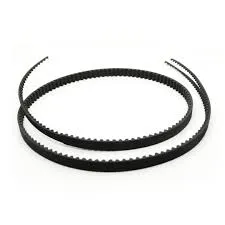- Arabic
- French
- Russian
- Spanish
- Portuguese
- Turkish
- Armenian
- English
- Albanian
- Amharic
- Azerbaijani
- Basque
- Belarusian
- Bengali
- Bosnian
- Bulgarian
- Catalan
- Cebuano
- Corsican
- Croatian
- Czech
- Danish
- Dutch
- Afrikaans
- Esperanto
- Estonian
- Finnish
- Frisian
- Galician
- Georgian
- German
- Greek
- Gujarati
- Haitian Creole
- hausa
- hawaiian
- Hebrew
- Hindi
- Miao
- Hungarian
- Icelandic
- igbo
- Indonesian
- irish
- Italian
- Japanese
- Javanese
- Kannada
- kazakh
- Khmer
- Rwandese
- Korean
- Kurdish
- Kyrgyz
- Lao
- Latin
- Latvian
- Lithuanian
- Luxembourgish
- Macedonian
- Malgashi
- Malay
- Malayalam
- Maltese
- Maori
- Marathi
- Mongolian
- Myanmar
- Nepali
- Norwegian
- Norwegian
- Occitan
- Pashto
- Persian
- Polish
- Punjabi
- Romanian
- Samoan
- Scottish Gaelic
- Serbian
- Sesotho
- Shona
- Sindhi
- Sinhala
- Slovak
- Slovenian
- Somali
- Sundanese
- Swahili
- Swedish
- Tagalog
- Tajik
- Tamil
- Tatar
- Telugu
- Thai
- Turkmen
- Ukrainian
- Urdu
- Uighur
- Uzbek
- Vietnamese
- Welsh
- Bantu
- Yiddish
- Yoruba
- Zulu
Dec . 25, 2024 12:57 Back to list
Understanding the Benefits and Applications of Single Sided Timing Belts in Mechanical Systems
Understanding Single-Sided Timing Belts A Key Component in Mechanical Systems
Timing belts are essential components in various mechanical systems, providing precise timing and synchronization between rotating parts. Among the different types of timing belts available, single-sided timing belts stand out for their unique design and application versatility. This article delves into the features, advantages, applications, and maintenance of single-sided timing belts.
What is a Single-Sided Timing Belt?
A single-sided timing belt features teeth molded into only one side of the belt, which engages with the corresponding teeth on the sprockets. This design allows for efficient power transmission in one direction, making it suitable for applications where torque and precision alignment are crucial. Typically made from durable materials such as neoprene or polyurethane, these belts are reinforced with fiberglass or steel tension members to enhance durability and strength.
Advantages of Single-Sided Timing Belts
1. Precision and Reliability Single-sided timing belts provide a high degree of precision in motion control. This precision is vital in applications requiring synchronous operation, such as in robotics and automotive engines. Their ability to maintain accurate timing helps reduce wear and tear on components, leading to a longer lifespan.
2. Space Efficiency The design of single-sided timing belts allows for a more compact setup. By utilizing only one side for engagement, it reduces the overall space required for installation compared to double-sided belts. This feature is particularly beneficial in tight spaces where equipment layout is a critical consideration.
3. Less Maintenance Single-sided timing belts often require less maintenance than their counterparts. The lack of exposed teeth on one side means there is less chance of debris accumulation, which can lead to wear and failure. Additionally, they do not require lubrication, making them more user-friendly.
4. Versatility These belts are used in a wide range of applications, from automotive engines to conveyor systems and automated machinery. Their versatility makes them a popular choice across various industries, including manufacturing, aerospace, and consumer electronics.
Applications of Single-Sided Timing Belts
Single-sided timing belts are used in various applications due to their efficiency and effectiveness
single sided timing belt

- Automotive Engines In car engines, single-sided timing belts are crucial for synchronizing the rotation of the crankshaft and camshaft, ensuring that the engine operates efficiently and within the correct timing.
- Industrial Machinery Many manufacturing processes rely on single-sided timing belts to drive machines such as conveyor systems, robotic arms, and assembly lines. Their ability to handle high loads while maintaining precise motion makes them ideal for these applications.
- Consumer Electronics Devices like printers, scanners, and fax machines utilize single-sided timing belts for moving internal components in precise configurations, enhancing the overall functionality and reliability of the devices.
Maintenance and Considerations
While single-sided timing belts are low-maintenance, there are still essential considerations to ensure their longevity and performance
- Regular Inspections Periodically checking for wear and tear, such as cracks or fraying, is crucial. Early detection of such issues can prevent unexpected failures.
- Proper Tensioning Ensuring that the belt is correctly tensioned is vital for optimal performance. A belt that is too loose can slip, while one that is too tight can cause premature wear on both the belt and the pulleys.
- Environmental Factors Exposure to extreme temperatures, chemicals, or contaminants can affect the belt's performance. It is essential to ensure that the environment in which the belt operates is suitable for its material properties.
Conclusion
Single-sided timing belts are a critical component in many mechanical systems, offering precise motion control, space efficiency, and low maintenance needs. Their unique design and versatility make them suitable for various applications across numerous industries. Understanding how they work and how to maintain them ensures their continued performance, contributing to the reliability and efficiency of the machinery they support. In a world where precision and efficiency are paramount, single-sided timing belts remain an invaluable asset in engineering and manufacturing.
-
Upgrade Power Steering Pump Belt for Smooth, Quiet Operation
NewsAug.27,2025
-
Precision Timing Belt & Chain: Engine Performance & Durability
NewsAug.26,2025
-
Precision Lathe Drive Belts: Durable & Reliable Performance
NewsAug.25,2025
-
84.5 Serpentine Belt: Durable & Precision Fit for Your Engine
NewsAug.24,2025
-
Premium Ribbed Drive Belts for Quiet Power Transmission
NewsAug.23,2025
-
High-Performance Vehicle Timing Belt for Engine Precision
NewsAug.22,2025

